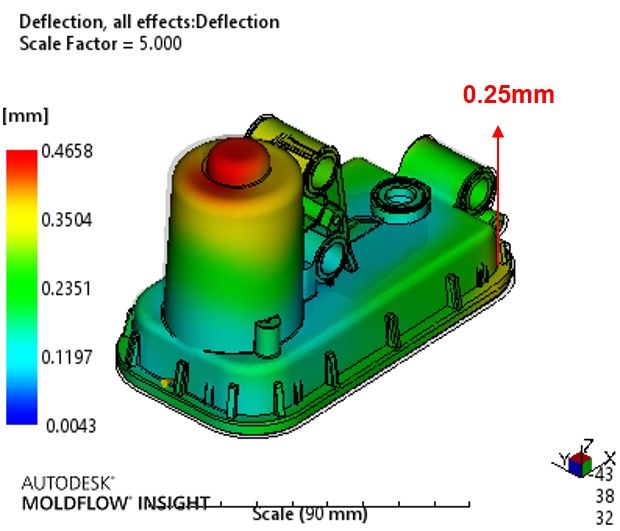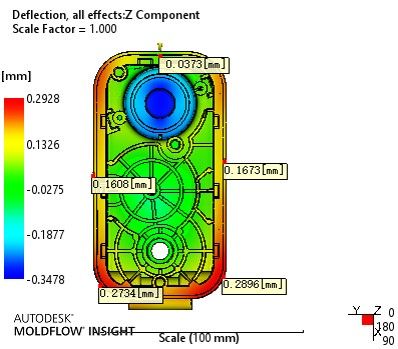Moulding isn't a science although there's a fair bit of science in it.
Usually, you take the 3D CAD model and do simulations on it to estimate the distortion that's likely to occur when it solidifies. The position of the gates, the moulding pressure, the moulding time etc all affect how the plastic flows into the cavity, the various fronts fuse together and then the whole solidifies. If the final result looks sensible, the tool is made and you try it for real. At that point you have another round of optimisation with real parameters (at the moulding machine itself) and hopefully end up with a solution that works for you. If required, the next stage is to modify (remake) the tool so that it sort of pre-compensates for the shrinkage you will see, so that after shrinkage and distortion, it's close to what you want. Nice if you can avoid that extra step.
Moldflow(c) from Autodesk is probably the industry standard software for this FEA analysis. Here are some pictures fro a recent analysis. The first parts came off about 2 weeks ago are are pretty close to what was predicted. That's down to having an experienced moulder and materials supplier as much as anything else.



To answer the question, the original part needs to be drawn and toleranced according to the application using std GD&T methods, using ISO or otherwise, with critical characteristics clearly defined. So if you need to weld it (laser, ultrasonic etc), there will be a flatness tolerance so that you don't have to overclamp (and hence prestress) the part, if you need to press a bearing or shaft into it, there will be tolerances for position, squareness, fit tolerance etc. Quite what the final dimensions of the mould tool are is more down to the moulding company.
Murray
Muzzer.








